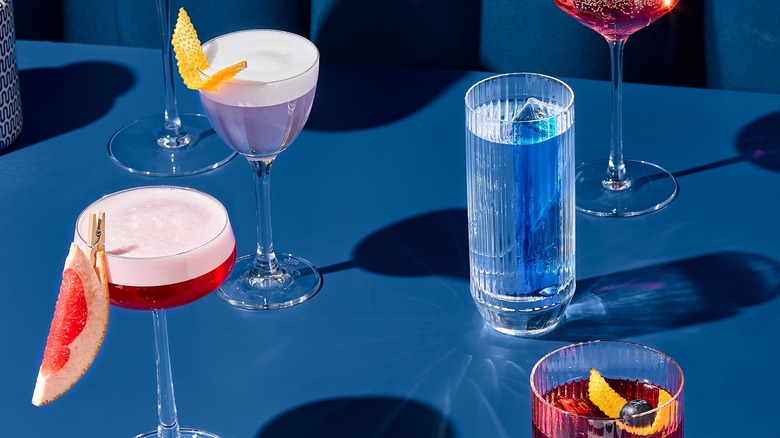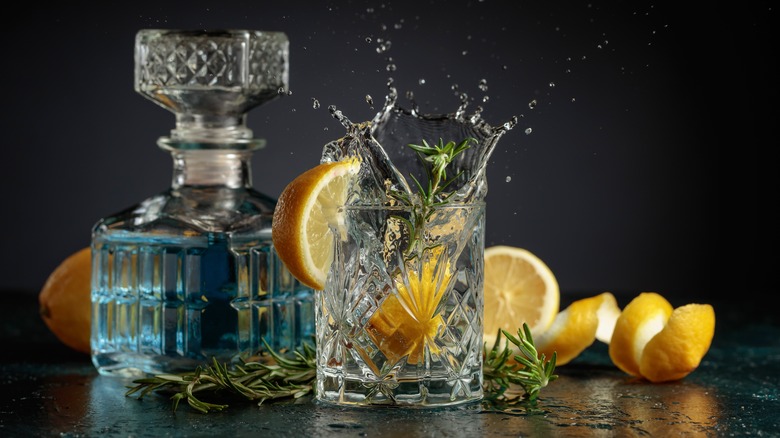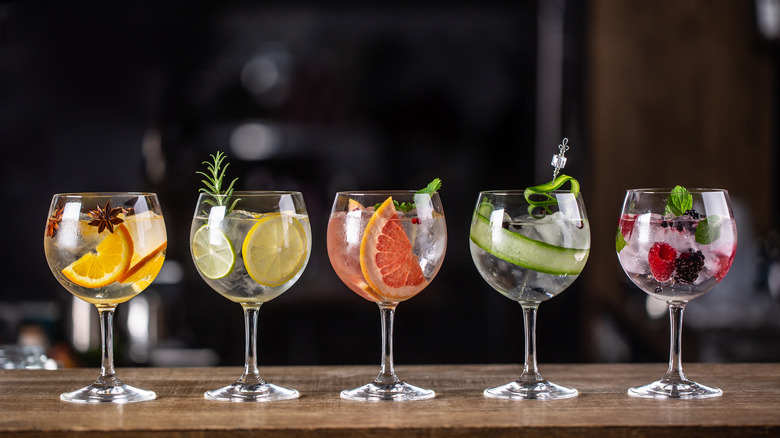The Two Main Types Of Cocktail Garnish You Need To Know
Some drinks are just not complete without the proper garnish. Whether the addition adds a little flair or serves as a flavor enhancer, a garnish is what takes some special cocktails from good to great by fusing together new tastes, smells, and some visual appeal. Because the options for a cocktail garnish are so immense, with the possibility of using okra just as possible as a twist of lemon, it's hard to know where to begin. Well, one thing we know how to do well is make drinks — and that includes some know-how on garnishes.
These simple adornments can make a big impact and even be the deciding factor in whether or not a customer orders that $12 cocktail (You first eat with your eyes, after all). So to start you off with some basic knowledge about cocktails, let's talk about the two main types of cocktail garnish you need to know: the decorative garnish and the functional garnish.
The different categories of garnish
While there are many different things you can use as a garnish, all drink ornaments can be classified into just two different categories: the decorative garnish and the functional garnish. Decorative garnishes, as their name might suggest, are meant only for show and add little to the flavor experience. Their power lies in their beauty. This could be anything from few slices of dried fruit to a handful of fresh flowers. Even a little umbrella can fit in this category.
Now functional garnishes, like a twist of lemon for example, actually do add flavor. Functional garnishes can have a few different benefits. Embellishments in this category can give customers the option to alter a drink to their taste. For example, you can use that lime wedge on the side of your glass to add more acidity to your drink if you feel like it doesn't have enough of a punch. Functional garnishes can also add a refreshing aroma boost, like an orange peel in a Negroni. Other functional garnishes can even become little snacks, such as a slice of cucumber or an olive, which act as great palette cleansers between sips so you can have a refreshed drinking experience.
While each garnish serve a different purpose, knowing these two distinct categories can start as a good guide in your cocktail crafting, and drinking, journey. Bottom line–every garnish should have a special function and serve a real purpose alongside a drink.
Some must-have cocktail garnishes
Now that you're familiar with the two different classifications of cocktail garnish, let's talk about some of the basic adornment options. First, it's important to know when to use the right garnish. A maraschino cherry, for example, is one of the most popular options, but it doesn't mix in well with everything. If you're a fan of a whiskey sour or Tom Collins, you might see one in your glass to add a burst of sweetness to balance out the sour. For that reason, aspiring mixologists should always have a jar on hand.
There are a few other essential garnishes you should have at the ready. Limes and lemons offer both the benefits of a punch of flavor and they bring bright colors into whatever kind of cocktail you craft. For more avant-garde additions, keeping some sprigs of rosemary on hand is a great idea. The addition can bring an earthy punch to a whole slew of cocktails.(Like a gin and tonic, for example). Now if you're looking for something to add pomp and style to your drink without altering the taste, try out some dehydrated fruits for size. Not only are these a good investment because of their longevity, it's also really simple to make dehydrated fruit yourself.
Whether functional or decorative, every garnish has its purpose. Which is your favorite?


